The Lilith Blog
December 11, 2019 by Sheila Katz
The Threat to Abortion Rights You Might Not Know About
Imagine you go to purchase birth control, but find it is no longer available.
Imagine you want an abortion, but there are no clinics left in your state.
Imagine you want to start a family and struggle with getting pregnant, so you research and turn to in vitro fertilization (IVF) and surrogacy, only to find out they’re illegal.
Imagine at every phase of family planning, your right to have a child, prevent an unwanted pregnancy, or seek an abortion – rights that should be protected by the Constitution – have been taken away.
It sounds like an episode of the Handmaid’s Tale. But last week, when Sarah Pitlyk was confirmed as a judge on the US District Court for the Eastern District of Missouri, it became a very real scenario for millions of women who want to make their own decisions on how, when, and if they should have children.
- No Comments
December 9, 2019 by Eleanor J. Bader
Art in Exile Showcases Work by Artists Who Escaped the Nazis
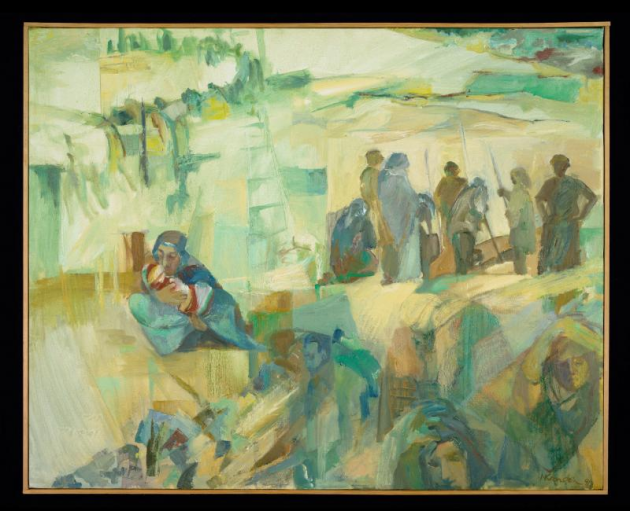
“Old Walls by the Sea” by Mina Krocherthaler, ~1968
Art in Exile, Leo Baeck Institute
Dispossession has been an historical constant, but during World War II thousands of German Jews with the means to escape Hitler’s rule found sanctuary in countries throughout the world. Of course, there were challenges aplenty; still, many thrived, finding personal and professional toeholds wherever they landed.
Some found solace in creativity, something that is showcased in Art in Exile: Paintings by German-Jewish Refugees, an exhibition now on display at New York City’s Leo Baeck Institute (LBI). The show homes in on the creativity of 11 artists who used painting, drawing and collage to explicate their refugee status and illustrate feelings of gratitude, fear, joy, loneliness, and apprehension. Four of the 11 are women.
Dr. Magdalena M. Wrobel, project manager at LBI, notes that in choosing the art, the curators sought a range of styles. But, she adds, they also wanted to illustrate a range of life trajectories. The goal? “To cumulatively demonstrate how an oppressive regime, exclusion, persecution, and finally exile can influence the artistic creativity of those afflicted in various ways.” In addition, Wrobel adds that in order to be included, the works had to be in good condition despite the passage of time and be available for the six-month duration of the show.
- No Comments
December 6, 2019 by admin
Lesléa Newman: What Happened When I Was Uninvited to a Yeshiva
Originally posted on the Nerdy Book Club.
I have been invited to hundreds of schools as a visiting author over the last several decades. And there are hundreds (thousands!) of schools who haven’t invited me. But I have never been uninvited to a school. Until now.
Here’s what happened: my publisher set up several days worth of school visits at a few yeshivas (Jewish day schools) in Brooklyn, the city of my birth. I was excited to discuss with students my newest picture book, Gittel’s Journey: An Ellis Island Story. Based on my own family history, the book tells how nine-year-old Gittel travels from Europe to America alone in the early 1900’s to escape pogroms and have a better life. It is a story infused with Jewish culture (Gittel’s mother gives Gittel her treasured Shabbos candlesticks to bring to the new world) and Jewish values (Gittel’s mother tells her, “This is God’s plan. God will take care of you.”) I imagined that the students might have their own family immigration stories to share and I was eager to hear them.
- 1 Comment
December 5, 2019 by Amy Stone
Women’s Narratives on Film Create Something Far from a Feel-Good Zionist Experience
The Other Israel Film Festival is not meant to be a feel good Zionist experience. In its 13th year at Manhattan’s Marlene Meyerson JCC, the eight days of films about minorities and women opened with “Advocate,” the documentary on crusading lawyer Lea Tsemel. After nearly 50 years, no longer a foul-mouthed babe in micro minis, Tsemel’s still defending Palestinian political prisoners. She sardonically jokes that she’s never won a case, but continues to play her advantages as a woman and a Jew. The festival closed with the even darker narrative “Screwdriver.” It’s the relentlessly hopeless tale of a West Bank man welcomed back as a hero by the media, his friends and family after years in an Israeli prison, taking the rap for an attempted murder. His loving family, opportunity for employment, and attractiveness to women can’t save him.
The mid-November festival was punctuated by Gaza rockets fired deep into Israel, Benny Gantz unable to form a cabinet, and the U.S. reversing its 40-year-policy, giving Israel the go-ahead on settlements in the West Bank.
- No Comments
December 2, 2019 by Avi Strausberg
A Torah of Tears: Reflecting on Torah Informed by the Lens of Queer Experience
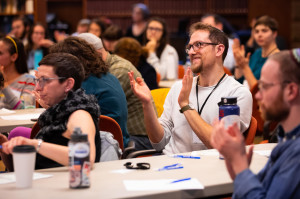
Hadar’s Queer Colloquium.
Trent Campbell, Picture This Productions
I didn’t think I needed Queer Torah in my life. I had a narrow vision of what Queer Torah was, which was limited to queering the characters of the Torah, essentially imposing gayness onto our ancestors, for the sake of seeing myself represented in our narratives. While I don’t underestimate how for many people it is not only powerful but even necessary to see ourselves represented in Torah, for me this notion held little appeal. This is why, even as a queer rabbi, I didn’t have any of the good Queer Torah books* I was supposed to have on my bookshelf. I never sought them out, and if I’m honest, I’d say I even felt a bit turned off by them.
- No Comments
November 25, 2019 by admin
Fridays with Women: Shishi Nashim
by Diana Bletter
As a muezzin called worshippers to prayer from the minaret of the main mosque on Friday morning, November 15 in the old city of Akko, in Israel’s Western Galilee, at a small theatre space within the city’s ancient stone walls psychologist Dr. Fatina Khazen was speaking to a group of about 50 women – Jewish, Muslim, Christians and Druze – about creativity.
Shishi Nashim–“Friday Women”–is the joint initiative of two grassroots organizations in Akko: the Educators Kibbutz and Akko Women’s Vision. The project is also supported by the United Jewish Israel Appeal of the United Kingdom. The two organizations have been working to spark increased community involvement and a new creativity among the city’s 50,000 residents, who are one-third Arab and two-thirds Jewish.
Mirit Sulema, a member of the Educators Kibbutz, an urban kibbutz that is part of the Dror Israel Educational Movement, said the kibbutz members, who live within the city, sponsor events for residents so that they “don’t only exist side by side in a ‘mixed city’ but feel a part of a ‘shared city’ with a sense of community.”
Akko Women’s Vision was founded in 2003 by Dr. Janan Faraj Falah, the first Druze woman to receive her Ph.D. in Israel (if not in the entire Middle East). Faraj Falah is also the 2017 winner of the Jerusalem Unity Prize, its first non-Jewish recipient. She’s a senior lecturer at the Academic College of Education in Haifa and a researcher at the University of Haifa.
- No Comments
November 24, 2019 by admin
In the Image of God?
By Mica Maltzman
When I was younger, around the time of my consecration, my vision of God was simple. Questions like “Who is God?” and “Where is God?” seemed silly, because the answer was literally right in front of me every Friday night on the bimah as I sat in services. God was the man with a cap of white hair, a feathery beard, and wire-rimmed glasses known as Rabbi Reiner. But after years of feeling confident in my image of God, I was shocked when my mother informed me that our rabbi was, in fact, not the divine being that we sang to and about in every prayer.
With this revelation, I began a nearly ten year-long journey in search of what God meant to me. Coming from a family that would describe themselves as “culturally Jewish,” God has never played a pivotal role in my Jewish identity. I’ve always considered my Judaism to consist mostly of waking up at 7:30 am on Sunday mornings for religious school, dressing in whites and khakis for Shabbat at my sleep-away camp, and spending weekends interacting with other Jewish teens at NFTY events. But ever since my image of Rabbi Reiner as God was shattered, I’ve never been sure where God fit into the picture.
While my mother shocked me with this hard truth, she also handed me a clean canvas for my perception of God that left infinite directions for me to go in. The Jewish spaces I found myself in quickly filled that canvas with colors and shapes.
- No Comments
November 21, 2019 by Janet Rosen
Shhh
by Janet Rosen
Far away there was an ocean crashing dark with waves; and in the blinking flicker of the newsreels, a screaming moustache the shape of a dark razor and big flags with hard angled shapes like four bent legs running fast. Red black white. Then the flags flapped on the building where the men in hats walk to City Hall and Sieg Heil.
Yellow stars must be sewn onto even the good soft tan cashmere coat. There was a silver thimble and scissors whose blades are the beak of a stork. Without the silver thimble, ouch! and a dot of blood like the eggs that must be thrown away but lick the finger when no one is looking. The stitches go up and down like stepping on and off the curb. Then on to the street and oh! up in the air in a plane to Paris before anyone finds out. So then all of the nice clothes and toys had to be left behind. Goodbye, little rabbit!
Mutti says you must never tell a lie. But you also must not tell anyone you are Jewish, just nod and make your hand do a cross like this when they say baby Jesus, shhh. The communion wafer was a little cracker, like if a doll had a Seder.
- No Comments
November 18, 2019 by Eleanor J. Bader
Through Her Lens: Documenting Crypto-Jews, Brooklyn Life, and More
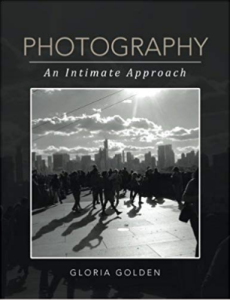
gloriagolden.com
When Gloria Golden was growing up in Brooklyn, New York – first in Bedford-Stuyvesant, and later in Borough Park and Gravesend — her father carried a camera everywhere he went. But his daughter did not follow his example.
Unlike her dad, Golden did not begin to take photographs until 1994, when she took a course at Queensborough Community College during a sabbatical from her job as an elementary school teacher.
Since then, Golden has taken thousands of shots and has published five books of photos and text: Remnants of Crypto-Jews Among Hispanic Americans (2005); Desaturated Soul (2009); Brooklyn Revisited (2012); Photography: An Intimate Approach (2016); and Metallic Metropolis (2019).
Now living on Long Island, the award-winning photographer discussed her career with Lilith’s Eleanor J. Bader in early November.
Eleanor J. Bader: Let’s start by talking about your early years as a public-school teacher, before you found a foothold in photography. Did you like teaching?
Gloria Golden: Let’s go back even earlier. I was born in the 1940s and attended New Utrecht High School in Brooklyn. When I began studying there, I was in the commercial education program, training to be an office worker, because I did not think my parents could afford to send me to college. When I explained this to one of my teachers, she was shocked and called my parents in to discuss my future. After this conversation, I was put on the academic track. When I graduated, I enrolled at what was then called the Uptown City campus of City College. I’d originally assumed I’d teach business classes since that was what I’d focused on during high school, however, I ended up taking classes in elementary education at Uptown City to prepare me to teach elementary school. Martin Luther King spoke at my college graduation. Can you believe it?
- No Comments
November 15, 2019 by Eleanor J. Bader
Fresh Art for Social Change…and Healing
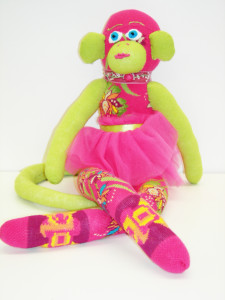 There is a photocopied sign on the wall of art administrator Suzanne Kreps’ cluttered office: “Change will not come if we wait for another person or some other time…We are the ones we’ve been waiting for…We are the change that we seek.”
There is a photocopied sign on the wall of art administrator Suzanne Kreps’ cluttered office: “Change will not come if we wait for another person or some other time…We are the ones we’ve been waiting for…We are the change that we seek.”
The quote, attributed to former President Barack Obama, reinforces Kreps’ commitment to using art to promote social justice. She’s done this for 16 years, as the executive director of fresh art, a small, New York City-based non-profit that organizes fine art and craft workshops for underserved and disadvantaged adults— seniors, women and men in recovery from chemical dependencies, the homeless, the mentally ill, and people with HIV, AIDS, mental illnesses and physical and emotional disabilities. It also organizes exhibitions of their work.
As Kreps prepares to retire at the end of 2019, she sat down with Eleanor J. Bader to look back on her work with the organization.
Eleanor J. Bader: Let’s start with history. How and when did fresh art begin?
Suzanne Kreps: Wendy Grossman founded fresh art in 1997 and started its programming in 1999. Wendy had been working as a recreational therapist at the now-defunct John Heuss House, a drop-in center for homeless men and women living with mental illness, that was located in Lower Manhattan. This was in the late 1990s. Wendy’s job included organizing group activities as well as art classes, other recreational programming, and activities emphasizing daily living skills. In 1997, she mounted “Inside Out”, a show of works created by the participants. My partner, Clarke, who also worked at John Heuss House, suggested that Wendy contact me since I was working at OK Harris Gallery. I knew a fair amount about arranging exhibitions, so he thought I could help. I assisted in the installation of that show and later became a member of an Advisory Board that helped Wendy form fresh art.
The idea of starting a non-profit arts organization had been with Wendy for some time. She envisioned an organization that would provide programming to a wide-range of underserved and at-risk populations—including disadvantaged youth, homeless and formerly homeless individuals, people with disabilities, and low-income and isolated seniors.
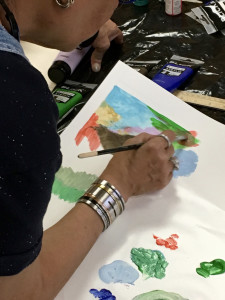 Wendy eventually left Heuss House and with the help of the New York Foundation for the Arts– the fiscal sponsor of the organization while it waited for its 501(c 3) status — she was able to get the fledgling organization off the ground. She began running the organization out of her family’s fifth floor walk-up apartment in the East Village.
Wendy eventually left Heuss House and with the help of the New York Foundation for the Arts– the fiscal sponsor of the organization while it waited for its 501(c 3) status — she was able to get the fledgling organization off the ground. She began running the organization out of her family’s fifth floor walk-up apartment in the East Village.
From the beginning, fresh art arranged exhibitions to showcase the creativity of artists from the populations I just mentioned. One of the first was called “Wild Kingdom” and every piece had something to do with animal life. The art came from programs at the Bowery Residents Committee, St. Francis Residence III in Manhattan, Harlem Hospital, The Point in the Bronx, and five additional NYC organizations.
In April of 1999 the exhibition was installed at CB’s 313 gallery space on the Bowery, located next door to CBGBs. During the next two years, exhibitions were planned at other venues.
Then, in the summer of 2001, Wendy found a rental space in the basement of Washington Square United Methodist Church, another site that no longer exists. It opened in August 2001, a month before September 11th. The space was part office, part gallery, and part gift shop where artworks and crafts by artists affiliated with other non-profit agencies were for sale; fresh art stayed open in this spot until 2003.
- No Comments
 Please wait...
Please wait...